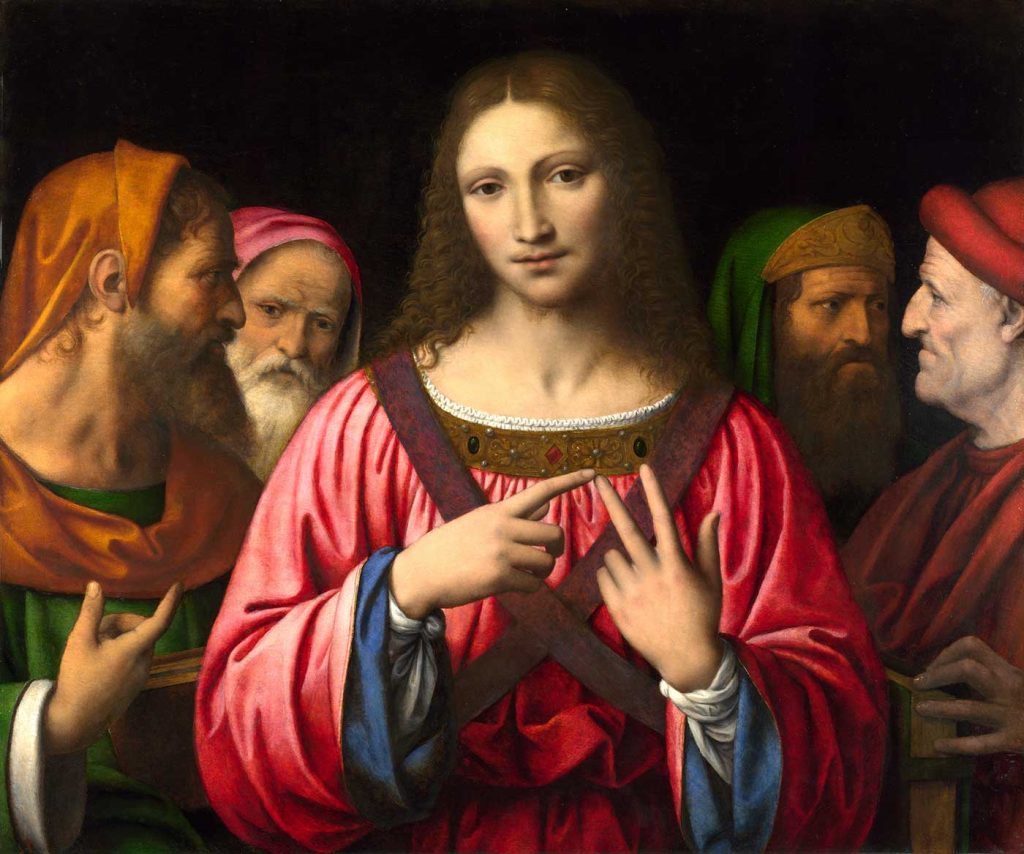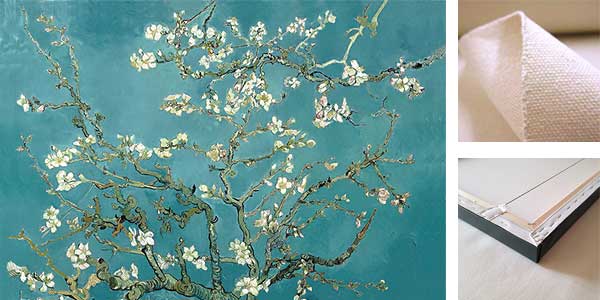
Christ Among the Doctors by Bernardino Luini was created in between 1515 – 1530. The painting is in National Gallery London. The size of the work is 72,4 x 85,7 cm and is made of oil on wood.
About the Work
At the age of 12, Jesus was taken to the Temple of Solomon in Jerusalem for the Jewish holiday of Passover by Mary and Joseph. On their way home, Mary and Joseph became accidentally separated from Jesus and did not realise that he had stayed behind at the Temple. He was found three days later debating learnedly with the theologians there (Luke 2: 41). Everyone who heard him was amazed by his answers. When Mary saw Jesus, she asked him, ‘Son, why have you treated us so? Behold your father and I have been searching for you in great distress.’ This is the moment at which we hear Christ’s first recorded words in Scripture, with which he identifies himself as the son of God: ‘Why are you looking for me? Did you not know that I must be in my Father’s house?’
In Luini’s painting Jesus looks at us serenely as he counts the points of his argument off on his fingers. He is surrounded by four elderly theologians who clutch their books and turn to one another, doubting Jesus’s words. His idealised, delicate features contrast with the rough lined faces of the old theologians. Luini has not included the Temple or any setting at all. Hemmed in on both sides, Jesus seems to shine forth from the darkness, as the new Light of the World. This use of extremes of light and dark to heighten the drama of a scene is known in Italian as chiaroscuro, with Luini imitating Leonardo da Vinci’s ’s sfumato – his way of dissolving form into the surrounding darkness in the manner of smoke. Read more in National Gallery London
About the Artist
Bernardino Luini (c. 1480/82 – June 1532) was a north Italian painter from Leonardo’s circle during the High Renaissance. Both Luini and Giovanni Antonio Boltraffio were said to have worked with Leonardo directly; he was described as having taken “as much from Leonardo as his native roots enabled him to comprehend”. Consequently, many of his works were attributed to Leonardo. He was known especially for his graceful female figures with elongated eyes, called Luinesque by Vladimir Nabokov.
Luini was born as Bernardino de Scapis in Runo, a frazione of Dumenza, near Lake Maggiore. Details of his life are scant. In 1500 he moved to Milan with his father. According to Lomazzo, he trained under Giovan Stefano Scotto, although for others he was a pupil of Ambrogio Bergognone. Read more in Wikipedia
Order a reproduction of this work (printed on canvas)
